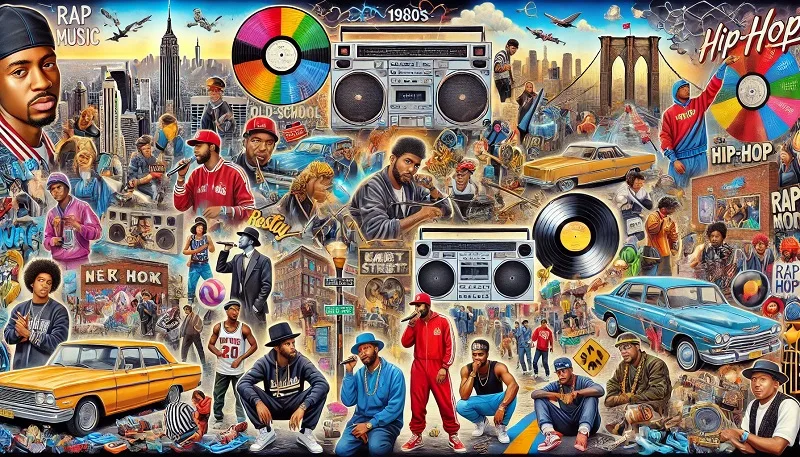The History of Rap Music and Its Cultural Impact

Rap music, originating in the streets of New York City in the 1970s, has grown to become one of the most influential genres in modern music. This genre, which emerged from African American communities, is characterized by rhythmic and rhyming speech and has profoundly impacted various aspects of culture globally.
The Origins of Rap Music
Rap music traces its roots to the 1970s in the Bronx, where block parties became a popular social activity. DJs such as Kool Herc started experimenting with breaks – short, percussive sections of songs – which led to the development of breakdancing and MCing, the early form of rapping. The combination of these elements laid the groundwork for what would become hip-hop culture.
The early years of rap were marked by innovation and creativity, with pioneers like Grandmaster Flash, Afrika Bambaataa, and the Sugarhill Gang bringing rap into the mainstream. The release of “Rapper’s Delight” in 1979 is often cited as the first significant rap record, which opened the doors for rap to enter the broader music industry.
Rap’s Evolution in the 1980s and 1990s
The 1980s saw rap music evolve both musically and thematically. Artists like Run-D.M.C., LL Cool J, and Public Enemy began addressing social and political issues, reflecting the struggles of African American communities. This era also introduced the world to the concept of “gangsta rap,” with N.W.A. painting a gritty picture of life in South Central Los Angeles.
The 1990s brought rap music to new heights of commercial success, with artists like Tupac Shakur, The Notorious B.I.G., and Nas becoming household names. The East Coast-West Coast rivalry also defined this era, highlighting the regional diversity within the genre. This period cemented rap’s place in mainstream culture, with artists exploring a wide range of themes from street life to personal struggles.
The Globalization of Rap Music
As the 21st century dawned, rap music had transcended its American roots and become a global phenomenon. Artists from different countries began incorporating rap into their local music scenes, blending it with traditional sounds to create unique subgenres. This global expansion of rap has allowed the genre to resonate with a broader audience, influencing popular culture across the world.
Rap and Social Change
Rap music has always been more than just entertainment; it has served as a powerful tool for social commentary. From its inception, rap has been used to address issues such as poverty, racism, and police brutality. Artists like Kendrick Lamar and J. Cole continue this tradition today, using their platforms to speak on contemporary social issues.
The ability of rap music to reflect and influence social movements has made it an essential part of cultural discourse. It provides a voice to marginalized communities and brings attention to issues that are often overlooked by mainstream media.

Rap’s Influence on Fashion and Language
Beyond music, rap has had a significant impact on fashion and language. The genre’s influence can be seen in the rise of streetwear brands like Supreme and the mainstream popularity of urban fashion trends. Additionally, rap has introduced new slang and expressions into everyday language, shaping the way people communicate globally.
The symbiotic relationship between rap music and fashion continues to evolve, with many artists launching their own clothing lines, further blending the boundaries between music and style. The linguistic impact of rap, especially in the digital age, demonstrates the genre’s pervasive influence on communication and identity.
The Future of Rap Music
As we look to the future, rap music shows no signs of slowing down. The genre continues to innovate, with new artists bringing fresh perspectives and sounds. The advent of technology and social media has also changed how rap is created and consumed, making it more accessible to a global audience.
Rap’s ability to adapt and stay relevant suggests that it will continue to be a dominant force in the music industry. Its cultural significance will likely grow, as it remains a powerful medium for storytelling and expression.
